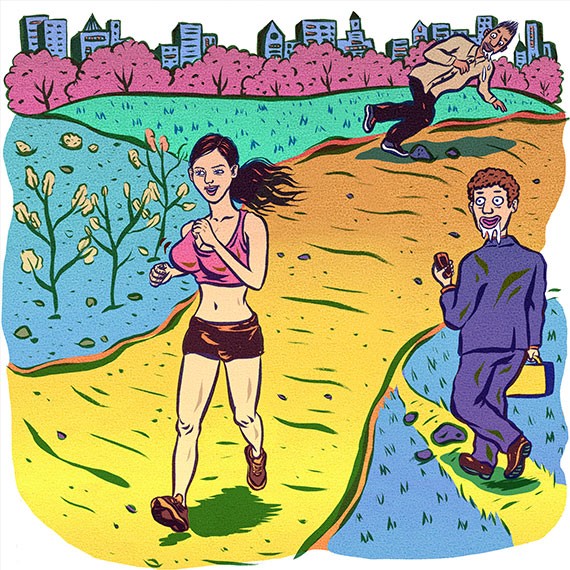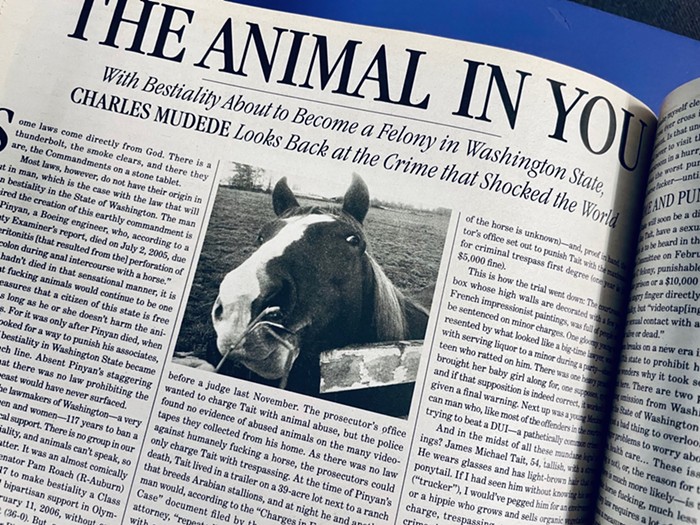But anyone who knows the seductress behind it all might be surprised. An English poet best known for her religious verses and personal piety, Christina Rossetti penned Goblin Market in the early 1860s. This poem about two young sisters, Lizzie and Laura, who are tempted by beast-like creatures to sample forbidden fruit, successfully hides a verbal journey into female sexuality and the erotic life of children under a blanket of religious allegory. Written in the Victorian gothic style so fashionable with the female literati of the time, Goblin Market grew immensely popular, and almost immediately the poem found itself on nursery room shelves--probably wedged between Lewis Carroll's Alice in Wonderland and Nathaniel Hawthorne's The Pomegranate Seeds as another forbidding fairy tale for curious little girls.
Although lauded in her day, Rossetti is unfortunately now better known as the sister and occasional model for artist Dante Gabriel Rossetti, whose paintings of virtuous white maidens in prayerful poses decorate Hallmark cards and calendars everywhere. The current production of Goblin Market, however, shows that there may be more to the model's prayerful pose than meets the eye. In the course of the poem, Lizzie succumbs, as any listener might, to the music of the goblins' sumptuous grocery list:
"Come buy our orchard fruits,
Come buy, come buy:
Apples and quinces,
Lemons and oranges,
Plump unpeck'd cherries,
Melons and raspberries,
Bloom-down-cheek'd peaches,
Swart-headed mulberries,
Wild free-born cranberries,
Crabapples, dewberries,
Pineapples, blackberries,
Apricots, strawberries;
All ripe together
In summer weather...."
Despite her sister's warnings, Lizzie ventures into the woods outside their home to find the fruit. She soon suffers the consequences: After gorging herself, she pines for the fruit, but can no longer hear the goblins' calls, and she grows physically weak and despondent. Laura, her level-headed sister, begins to fear for Lizzie's life, so she ventures into the woods to see if she can purchase some fruit to satisfy her sister. The goblins attempt to force Laura to taste their fruit, too, but she resists and returns to her sister, triumphant, covered in juices, offering herself up like a luscious pomegranate. A fitful night passes, but Lizzie finally awakes, redeemed. In a bittersweet coda, the two grow up to become dutiful wives and mothers. Neither explores the woods again.
Today, chances are that Barnes & Noble does not stock Goblin Market in the children's section. Nor is it easy these days to reconcile the author--a woman devoted to home and church--with the poem's feminist underpinnings and unsubtle eroticism. ("She suck'd and suck'd and suck'd the more, fruits which the unknown orchard bore; She sucked until her lips were sore," etc.)
It's the paradoxes Rossetti presents that have attracted new interest in the poet's work. Polly Pen and Peggy Harmon recently adapted Goblin Market with a musical score, which became the source for the voluptuous tone poem that Appino and her designers have created on ACT's stage. This production, further enriched by strong performances from Beth DeVries as Laura and Rachel Luttrell as Lizzie, is unabashedly theatrical, and a welcome response to the "talking head" performance trend. The performers, musicians, and production team manage a visual and vocal tone in sync with the fantastical nature of the narrative, and the design team's attention to creating weighty visuals pays off. The set offers an array of stagey symbols: a doll's house, a full moon, a looming spider, a giant pomegranate, a winding brook with real water. Each element feels carefully choreographed, and the audience is seduced as much as Lizzie and Laura.
As with most seductions, however, the intoxication wears off. The equation of the corseted Victorian with sexual repression is an easy one, made even more so with countless stage and film adaptations of more psychologically complex stories that touch on juvenile and female sexuality, like Wuthering Heights or The Turn of the Screw. (One wonders if the Victorians thought of anything but sex.) Consequently, the subtext holds few revelations, and as soon as the production's stunning effects fade out, so too does its power to provoke us. The production does attempt to underscore that the lives of the two sisters are as much a "living death" after they give up the fruit as when they're under its spell, and yet the tale still seems as confined to a time and place as the girls are. While Goblin Market may ultimately be a triumph of style over relevance, in this case style is nearly enough and the theater is great while it lasts.












